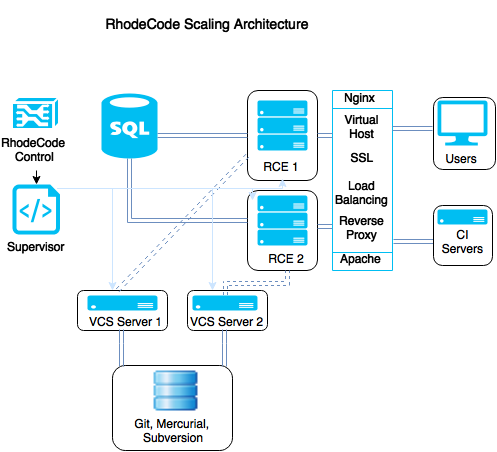Scaling Best Practices
When deploying |RCE| at scale; 100s of users, multiple instances, CI servers, there are a number of steps you can take to ensure you are getting the most out of your system.
Separate Users and CI Servers
You can configure multiple |RCE| instances to point to the same database and set of |repos|. This lets users work on an instance that has less traffic than those being hit by CI servers. To configure this, use |RCC| to install multiple instances and configure the database and |repos| connection. If you do need to reset the database connection, see the :ref:`config-database` section.
Once configured, set your CI servers to use a particular instance and for user specific instances you can configure loads balancing. See the :ref:`nginx-ws-ref` section for examples.
Switch to Database Sessions
To increase database performance switch to database-based user sessions. In a large scale deployment, we recommend switching from file-based sessions to database-based user sessions. For configuration details, see the :ref:`db-session-ref` section.
Tuning |RCE|
There are also a number of options available to tune |RCE| for certain scenarios, including memory cache size. See the :ref:`rhodecode-tuning-ref` section.
Use Authentication Tokens
Set up a user account for external services, and then use Authentication Tokens with those external services. These tokens work with push/pull operations only, and you can manage multiple tokens through this user account, and revoke particular ones if necessary. In this way one user can have multiple tokens, so all your jenkins/CI servers could share one account.
- To enable tokens, go to :menuselection:`Admin --> Authentication` and enable the rhodecode.lib.auth_modules.auth_token library.
- To create tokens, go to :menuselection:`Username --> My Account --> Auth tokens` and generate the necessary tokens. For more information, see the :ref:`config-token-ref` section.
Scaling Deployment Diagram

